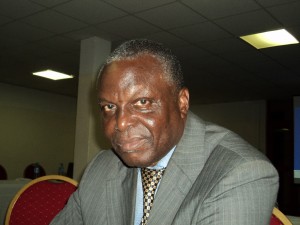I have been asked a couple of times to explain the terms and terminology in the UNFCCC procedure. I hope some of these terms will assist in the knowledge of following up in the process towards Paris COP 21.

Annex I & Annex II Parties
There are two distinct groupings that are involved in the UNFCCC process. These are Annex I and Annex II Parties. Annex I Parties are the industrialised countries. These industrialised countries are said to be the major emitters and are bound to emissions reductions targets under the Kyoto Protocol (KP). The Annex II countries are the less industrialised countries and have faced less of legal obligations to act.
There are different views on this distinction because some people are of the view that some countries in the non-Annex I countries/Parties are said to have developed beyond their original position in 1992 at the time the KP Agreement was entered into. Certain parties see this distinction as a road block to a far-reaching global deal. Others view this as vital to ensuring that those with historical responsibilities for climate change take the greatest responsibility for tackling it.
Conference of Parties (COP)
Conference of Parties is where Parties (or countries) under the auspices of the United Nations Framework Convention on Climate Change (UNFCCC) meet to negotiate on climate change. Paris will be hosting the 21st conference this year. The Parties have been negotiating for 25 years.
The Paris meeting is seen by some people as very important for humanity and that, if relatively ambitious deal is not reached, the suitability of the UNFCCC as a means of addressing climate change may be in doubt.
United Nations Framework Convention on Climate Change (UNFCCC)
The UNFCCC was signed in 1992 and held its first COP in 1995.The Convention was established with the aim of stabilising greenhouse gas concentrations “at a level that would prevent dangerous anthropogenic (human induced) interference with the climate system”. COP 21 is seen as a platform for an agreement that is actually going to make a difference in the lives of many people especially the vulnerable.
Bali Action Plan
The Bali Action Plan is a set of decisions and process emanating from the Dialogue on Long-Term Cooperative Action to address climate change by enhancing implementation of the Convention initiated during the Montreal Conference in 2005.The Action Plan forms a coherent basis for negotiations with a view to adopting an agreement in the post 2012 regime.
The four constituent components of the Bali Action Plan are: Mitigation, Adaptation, Technology Development & Transfer and Finance.
It is useful to mention that one of the significant developments at the Bali Conference was a change in formulation of the initial language of “developed and developing” countries that was replaced by a language of Parties “included in Annex I” and not included in “Annex 1”.
Copenhagen Accord
The Copenhagen Accord was the product of discussion firstly between some 30 countries and then the United States and the four BASIC Group (Brazil, South Africa India and China).
The Accord stated the political desire of about 139 States associated with the Agreement to address climate change in accordance with the principles of common but differentiated responsibilities and respective capabilities. The Accord is not legally binding.
REDD+
Reducing Emissions from Deforestation and Degradation (REDD) is the mechanism under the UNFCCC that seeks to reduce emissions, deforestation and degradation of forests.
Climate Finance
There is presently a definitional issue on Climate Finance. The UNFCCC does not have a definition of climate finance, as it is still work in progress. However, data collectors and aggregators use different operational definitions but with common elements. The review of the climate finance definitions adopted by data collectors and aggregators identified in the summary and recommendations by the Standing Committee on Finance on 2014 biennial assessment and overview of climate finance flows points to a convergence that can be formed as “climate finance aims at reducing emissions and enhancing sinks of greenhouse gases and aims at reducing vulnerability of and maintaining and increasing the resilience of human and ecological systems to negative climate change impacts”.
Green Climate Fund (GCF)
The Developed Countries at the United Nations Climate talks pledged $100 billion a year to help developing and poor countries cut their emissions and cope with climate change. Donors have contributed about $10 billion.
The Fund is important because it will catalyse finance and have a spin-off effect to spurring markets in wind, solar farms, renewable energy, carbon and other areas that emerging nations may prefer, according to Ms Hela Chelkroulion, the Executive Director of the Fund. The Secretariat of the Fund is in Seoul, South Korea. The Fund has a Board of Directors and the UNFCCC has the overall supervision of the Fund.
Loss and Damage
Loss and Damage has become an area of focus in the international climate negotiation. It was adopted at COP19 in Warsaw, Poland in 2013.
Loss and Damage is inherently linked to mitigation and adaptation. It refers to loss and damage caused by the impacts of climate change. Specifically, it is the term given to the calls of many countries that Annex I Parties should offer a form of compensation to developing countries for the damage caused to them by climate change.
The term “Loss and Damage” was seen in the UNFCCC text for the first time at COP13 in Bali, Indonesia.
There are still many terms that will be useful for us to understand the global language especially now that there is a need to develop knowledge in various aspects of environment, climate change and sustainable development.
By Prince Lekan Fadina (Executive Director, Centre for Investment, Sustainable Development, Management and Environment (CISME). (He is a member of the Nigeria Negotiation Team, Africa Group of Negotiators and member, AGN Finance Co-ordination Committee). Website: www.cismenigeria.com. Email: cismevision@gmail.com
